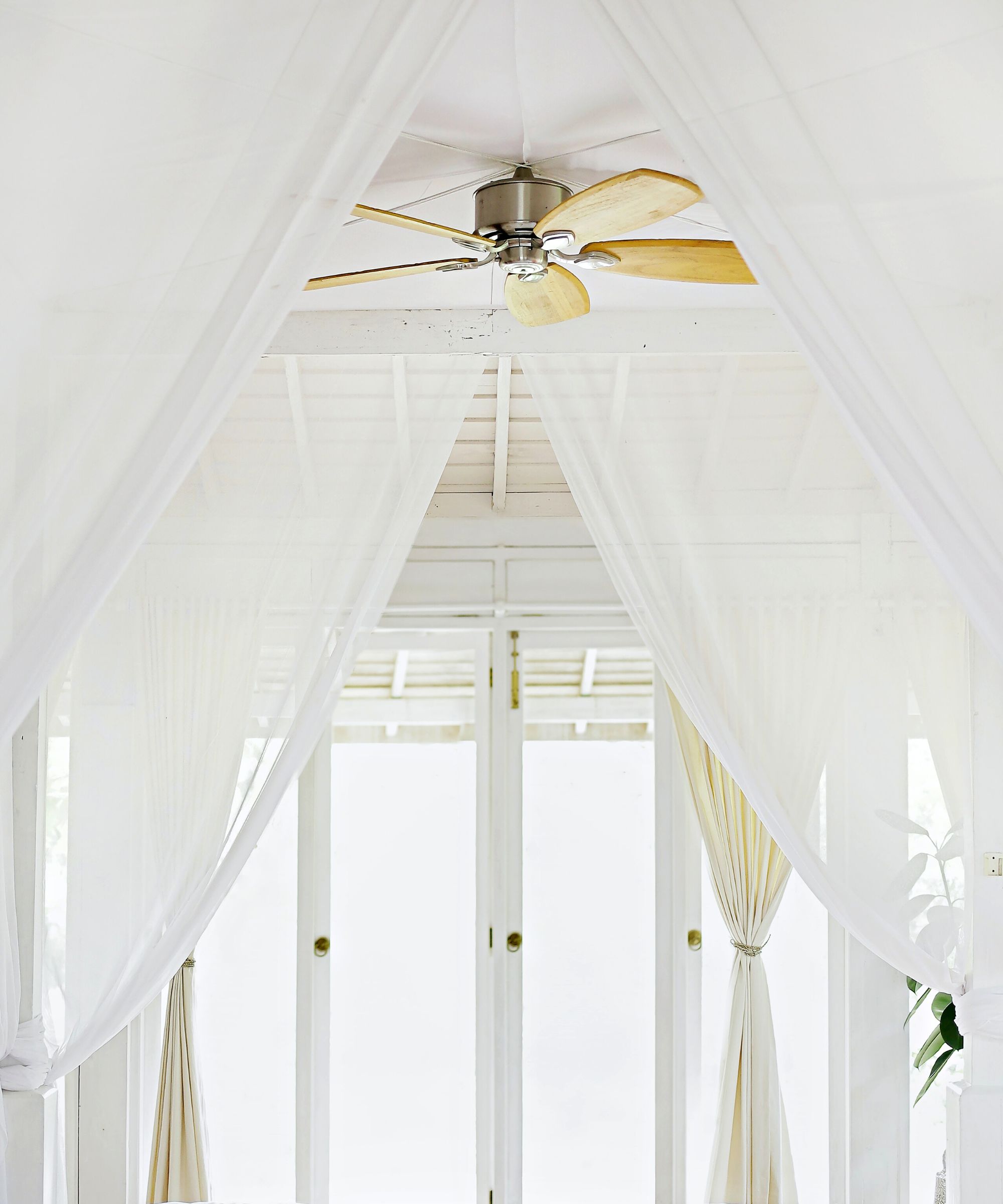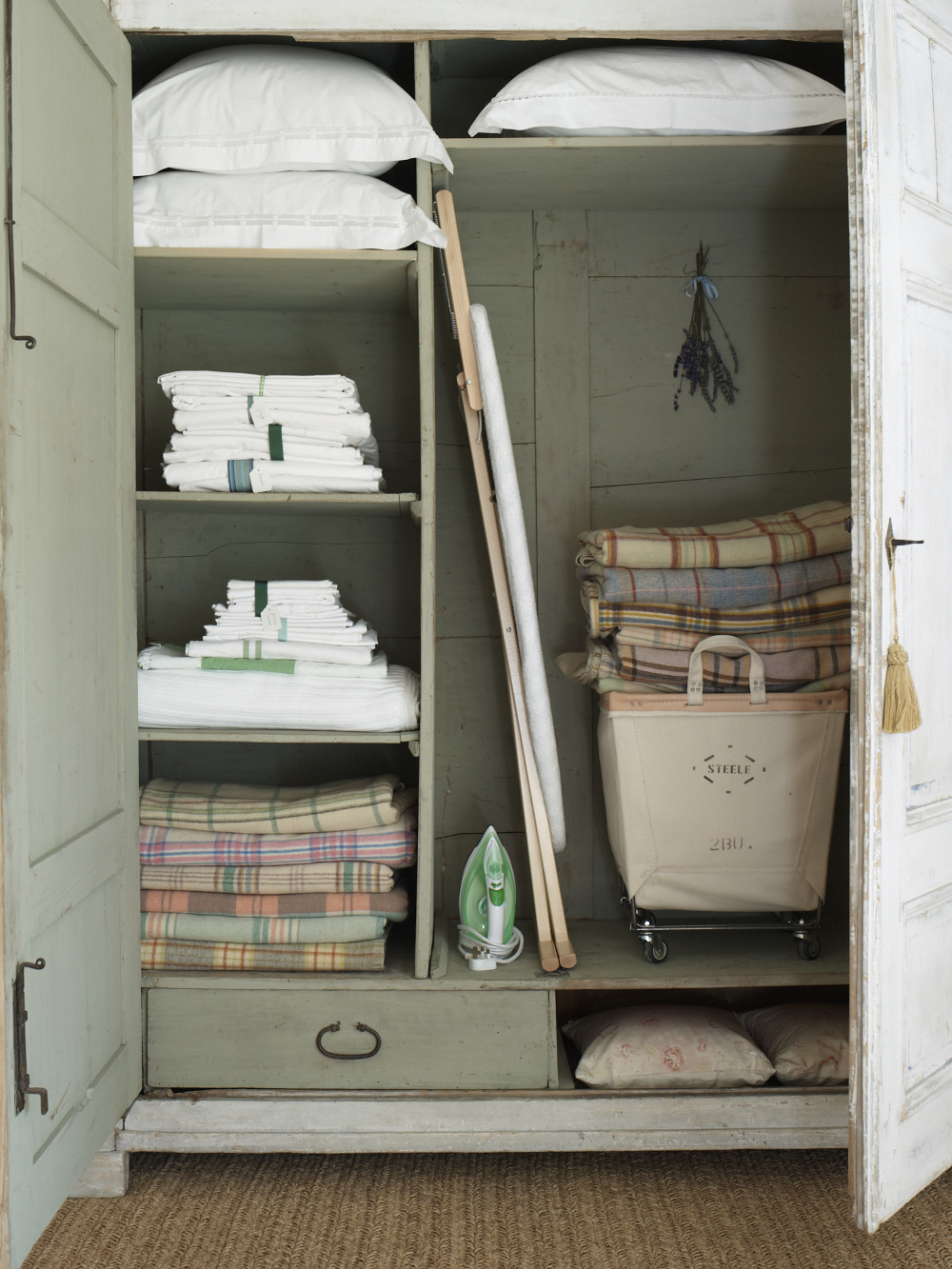My mom's ceiling fan cleaning tip helps to reduce dust and combat allergies – here is how to do it
Knowing how to clean a ceiling fan has never been easier than with my mom's hassle-free dusting method


Cleaning a ceiling fan is always a chore. Their awkward position in a room means that I often find myself ignoring my fan altogether – if I can't see the dust then it doesn't exist, right?
With my dust allergies flaring up, however, I knew I would have to tackle my dust problem soon or my sneezing would never cease. After watching me struggle and cough as the dust fell to my floor, my mom stepped in with her perfect cleaning tip for ceiling fans and I have never gone back to using a standard duster since!
This is what she taught me to make cleaning a ceiling fan that much easier.
How to clean a ceiling fan

With how thick the dust had become on top of my ceiling fan, even the best air purifier would struggle to shift the dust from the air if I turned my fan on, and with dust being one of the main ways your house makes you ill, it was about time I stopped avoiding this cleaning task. 'You do know that ignoring something doesn't make it go away, right?' my mom had poignantly asked me.
Thank's mom. I did, but I like to pretend that that is the case.
When she asked me if I had any old pillowcases laying around I was definitely confused. However, her little tip made complete sense once she showed me what to do. 'Slide the case over the fan blade completely and use the case to slide off the dust and collect it at the same time,' she told me. Now I would not have thought of that on my own.
I had to make sure to find an old pillow case in my linen closet that was a little past its best, however, to make sure I didn't ruin any of my best bed sheets. I found that microfibre pillowcases such as these on Amazon were some of the best for collecting dust and meant I did not need to use my more expensive linens.

This method made so much sense when it came to dusting with allergies. While there are plenty of cleaning hacks to avoid around the house, my mom's pillowcase hack helped to reduce the symptoms of my allergies both when cleaning and in daily life, as it helped to get rid of dust mites hiding spots.
I used my kitchen step ladder to reach the fan more easily before sliding the case over the blade, careful to not disturb the dust while the case went on. I pulled the fabric so that it was tight over the top of the blade and slid it slowly off, relieved as the case collected all the dust inside with very little if any disturbed into the air - there was no coughing this time around.
After repeating this with each blade, dusting my ceiling fan didn't seem as daunting a task each week.
'Make sure you clean your fan blades properly every so often,' mom reminded me, however. While this quick dusting trick was great for a weekly freshen up she had to remind me that cleaning the fan blades with warm soapy water every so often would help reduce the amount of dust that would stick over time, especially when followed up with a homemade cleaning spray to repel dust in my home. At least the pillowcase method would make wiping down the blades easier too.
How often should ceiling fans be cleaned?
Ceiling fans should be dusted around once per week to prevent thick dust build up. Clean the ceiling fan more thoroughly with soap and water once per month to remove build up and prevent the fan from dispersing the dust around your home and into the air when you turn it on.
Why do ceiling fans collect so much dust?
Ceiling fans appear to collect dust so much quicker than other items as static electricity builds up on the blades as they spin. Because of this, ceiling fans, despite their awkward location, should be dusted weekly to help relieve allergies and prevent dust and grime build-up.
Sign up to the Homes & Gardens newsletter
Design expertise in your inbox – from inspiring decorating ideas and beautiful celebrity homes to practical gardening advice and shopping round-ups.

Chiana has been at Homes & Gardens for two years and is our resident 'queen' of non-toxic living. She spends most of her time producing content for the Solved section of the website, helping readers get the most out of their homes through clever decluttering, cleaning, and tidying tips. She was named one of Fixr's top home improvement journalists in 2024.
-
 Extend the lifespan of your appliance with 5 simple but crucial washing machine maintenance tips
Extend the lifespan of your appliance with 5 simple but crucial washing machine maintenance tipsFrom cleaning the filters to keeping the door open, experts reveal the washer tips they swear by
By Andy van Terheyden Published
-
 These are the 6 must-have colors to decorate with in April 2025
These are the 6 must-have colors to decorate with in April 2025What do retro-inspired yellows and beautiful blues all have in common? They're on our hot list for the season ahead
By Sophia Pouget de St Victor Published